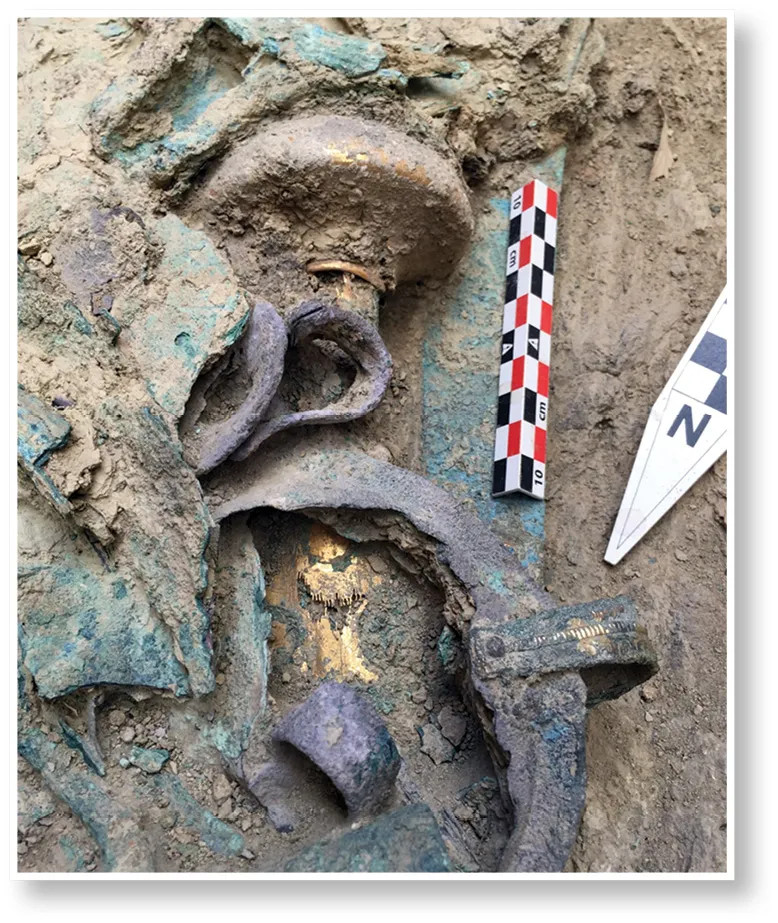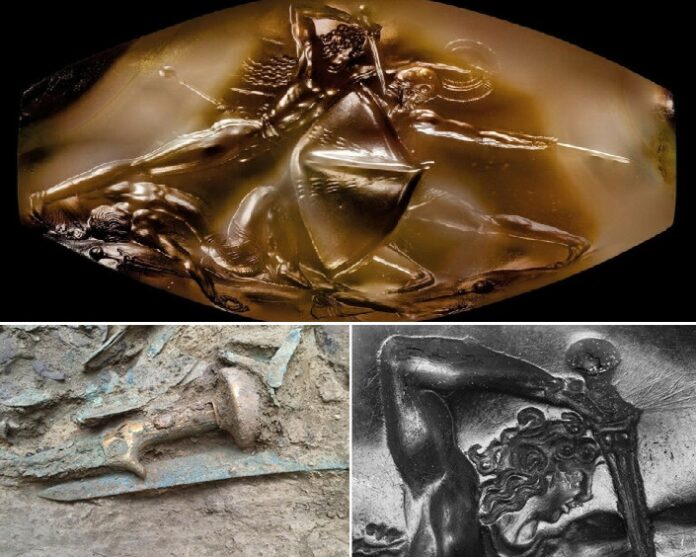In 2015, archaeologists in Pylos, Greece, made a remarkable discovery of a grave dating back to around 1450 B.C. The grave belonged to a warrior known as the “Griffin Warrior,” named for the intricate ivory plaque featuring a mythical griffin found among his burial items. This finding illuminated the interconnected world of the Aegean Bronze Age, with a bronze sword with an ornate gold pommel at the center of the mystery.
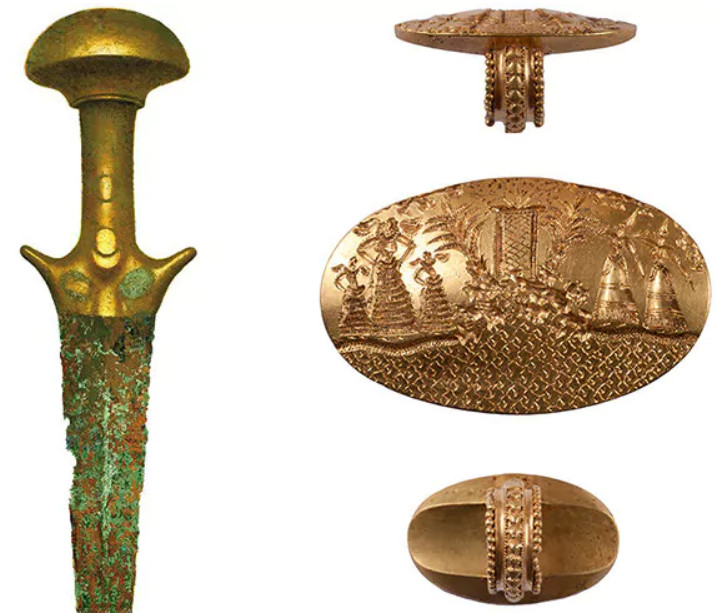
The Sword That Bridged Civilizations
Among the array of artifacts found in the Griffin Warrior’s tomb, one particularly stood out as a symbol of the cultural exchange prevalent in the region. This bronze sword, adorned with a precious gold pommel, bore striking resemblances to the iconic swords of the Minoans, the advanced civilization that thrived on the island of Crete.

The Minoan Hallmark: The Horned Hilt
The Minoans were celebrated for their exquisite craftsmanship, and their swords were no exception. A notable feature of these weapons was the distinctive “horned” hilt, with projections at the base forming a guard for the warrior’s hand. This unique design was common in Minoan art and archaeological findings across Crete, showcasing their metalworking prowess.
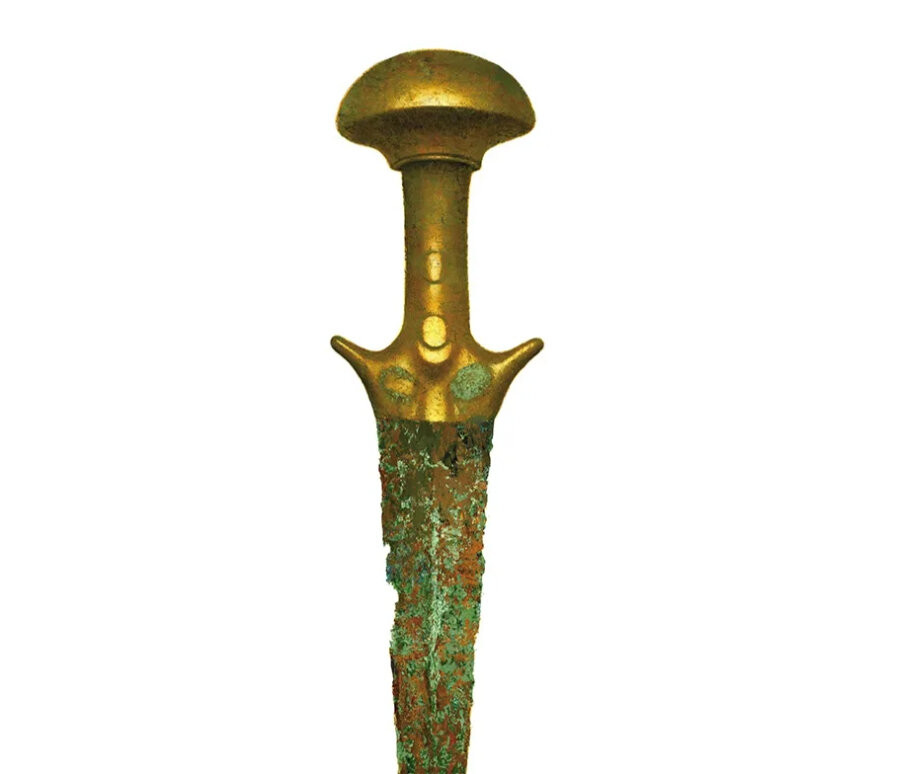
The Pylos Combat Agate: A Warrior Immortalized
Adding another layer to the mystery was a tiny but incredibly detailed seal stone, known as the Pylos Combat Agate, found alongside the Griffin Warrior’s remains. This intricate carving depicted a fierce combat scene, with a warrior – presumably the Griffin Warrior himself – wielding a sword that closely resembled the horned-hilt Minoan blade found in the grave.
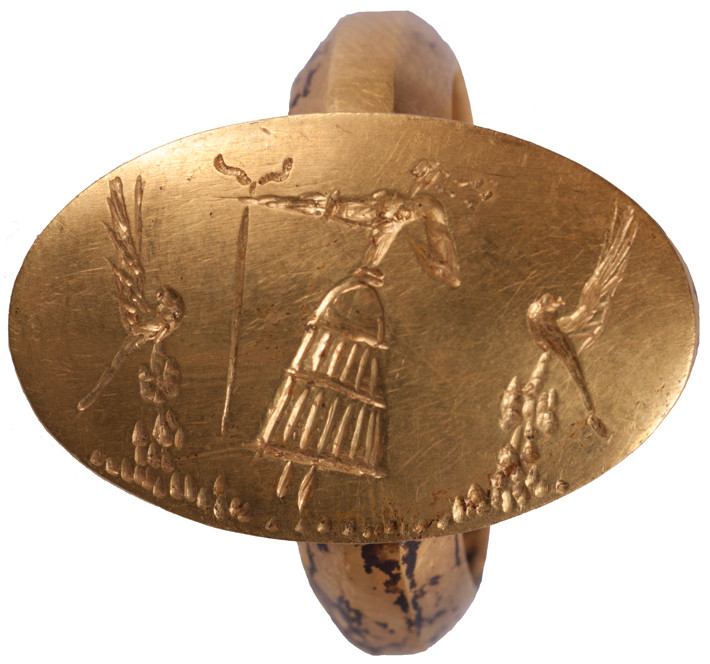
Unraveling the Connections
The presence of a Minoan-style sword in the Mycenaean warrior’s grave and its depiction on the Pylos Combat Agate suggest a profound cultural connection between these two civilizations. Several possibilities arise:
- The Griffin Warrior himself may have been of Minoan origin, carrying the traditions and weapons of his homeland.
- He might have acquired the sword through trade, warfare, or admiration for Minoan craftsmanship, reflecting the exchange of goods and ideas across the Aegean.
- The sword could symbolize the warrior’s status and prestige, as finely crafted weapons were coveted symbols of power in the Bronze Age.

A Tale of Warriors and Craftsmen
Beyond the archaeological implications, the Griffin Warrior’s sword speaks volumes about the interconnectedness of the Aegean world during the Bronze Age. It reminds us that even in ancient times, civilizations were not isolated entities but part of a complex web of cultural exchange, where the skills of warriors and craftsmen transcended borders and influenced each other.
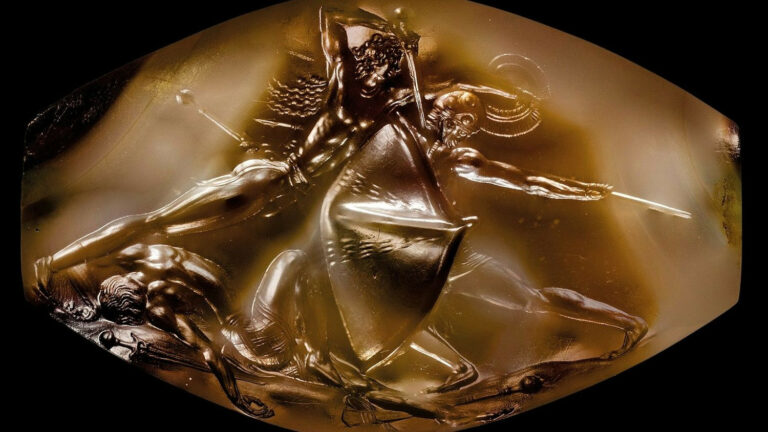
As we continue to unravel the mysteries of the past, the Griffin Warrior’s enigmatic sword stands as a testament to the enduring human desire for craftsmanship, prestige, and the perpetuation of cultural legacies through remarkable artifacts.
